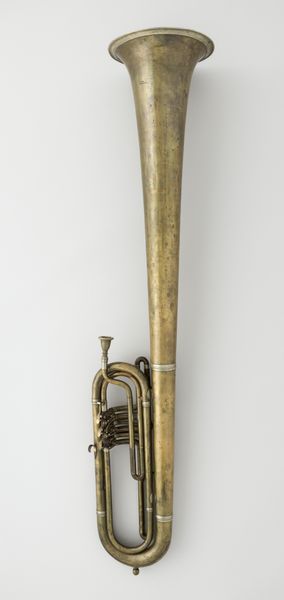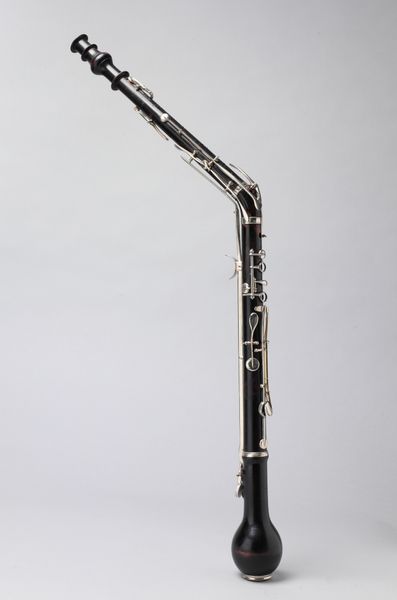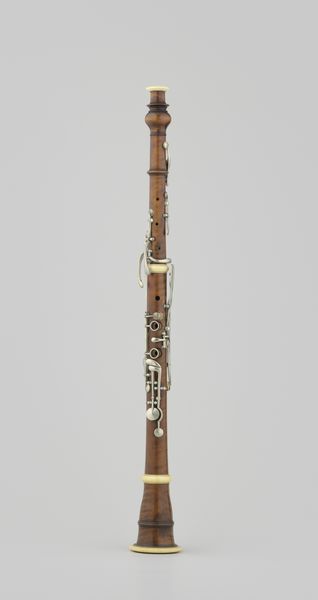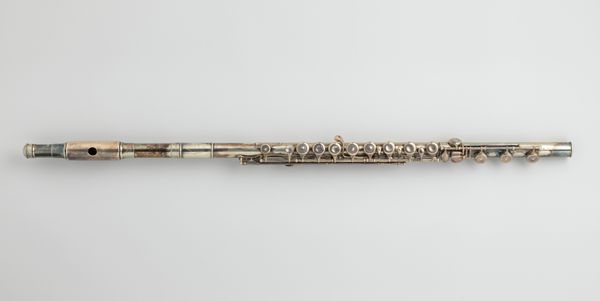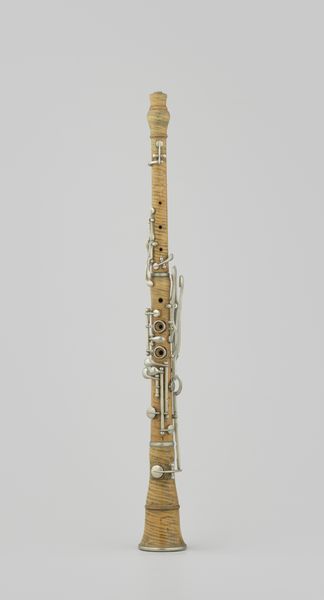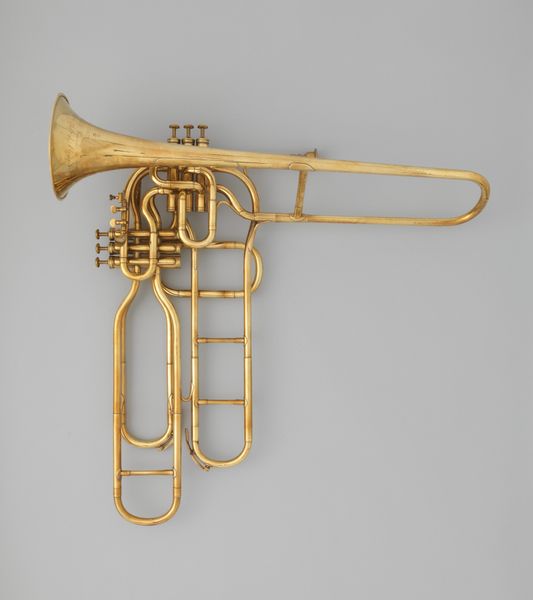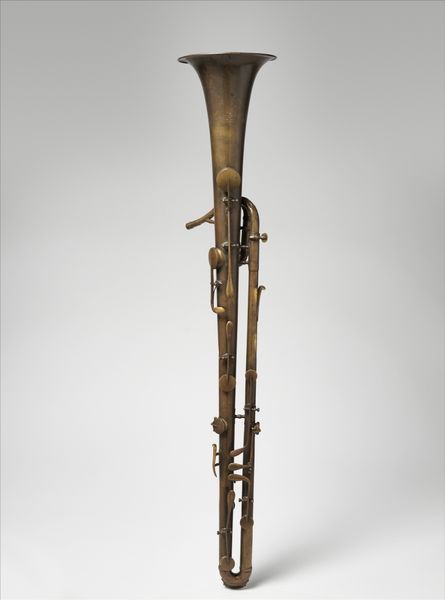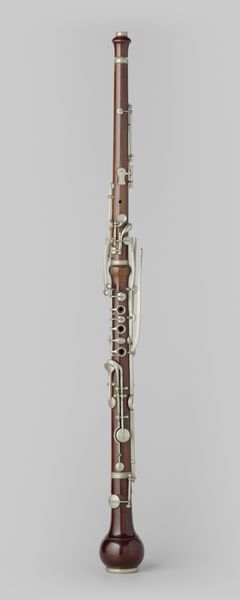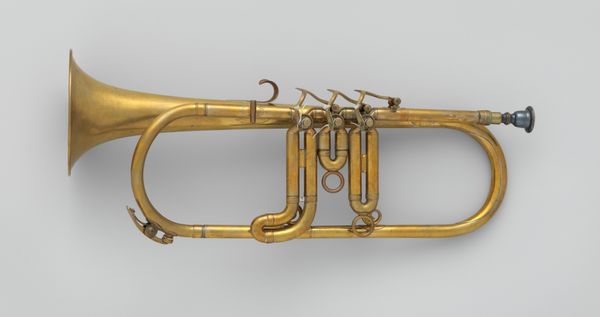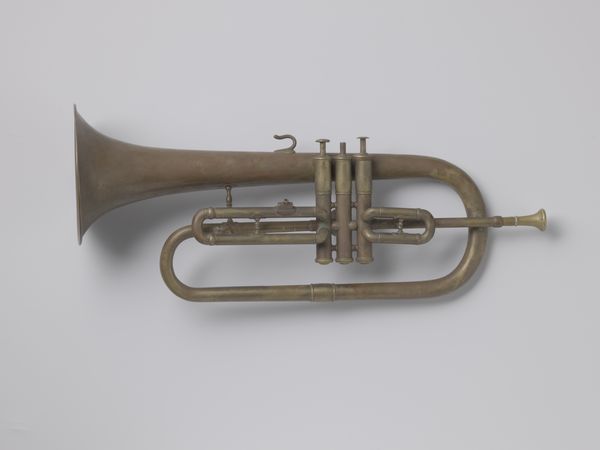
wood
#
stone
#
sculpture
#
sculptural image
#
wood
#
musical-instrument
#
decorative-art
Dimensions: 26 1/2 × 3 3/8 × 3 3/8 in. (67.3 × 8.6 × 8.6 cm)
Copyright: Public Domain
Curator: Well, hello there. Immediately striking is this Clarinet in B-flat. It dates from about 1800 to 1850 and is held in the collection of the Metropolitan Museum of Art. Editor: My eye is drawn to the ivory hue against what appears to be a very dark background. It creates this sense of suspended elegance; the clean lines emphasize the inherent musicality even in silence. Curator: The clarinet’s attribution goes to Charles Joseph Sax. Looking closely, the instrument is constructed primarily from wood, which might surprise viewers expecting metal in this period, doesn’t it? This would influence tone and likely made its production accessible to more artisans. Editor: Notice also the ornate brass keywork – how they adorn, yet also disrupt, the primary form of the instrument. The contrast speaks volumes! Does the arrangement have any grounding to suggest further tonal explorations, or does it simply act as a decoration? Curator: Sax’s factory involved an assembly-line method of musical instrument production, reflecting the Industrial Revolution's impact on craft. Rather than one craftsman, think of the layers of labor involved. From sourcing wood to brass components made separately, consider the socio-economic context embedded within it. Editor: I'm intrigued by the small dark pads covering the tone holes. Their stark circularity presents contrast against the straight body. I think it enhances the tactile dimensions of the instrument! One can practically feel it as a tangible sculptural form and this emphasizes the intent that this object might be something more. Curator: Absolutely. Think also how performance styles were changing, democratizing music in new venues. Makers like Sax played a pivotal role, as his enterprise altered labor conditions within the craft trades forever by fulfilling demand for mass-produced high quality musical products! Editor: I see now a blend of meticulous design meeting the functionality of making beautiful music. Curator: Viewing 'Clarinet in B-flat' then presents opportunity to question standard expectations regarding craftsmanship when technological progress has had impact—revealing music's ability in resonating through societal developments beyond solely auditory perception. Editor: A single piece that opens numerous interpretations, and really helps to think differently about aesthetic values found in objects!
Comments
No comments
Be the first to comment and join the conversation on the ultimate creative platform.


